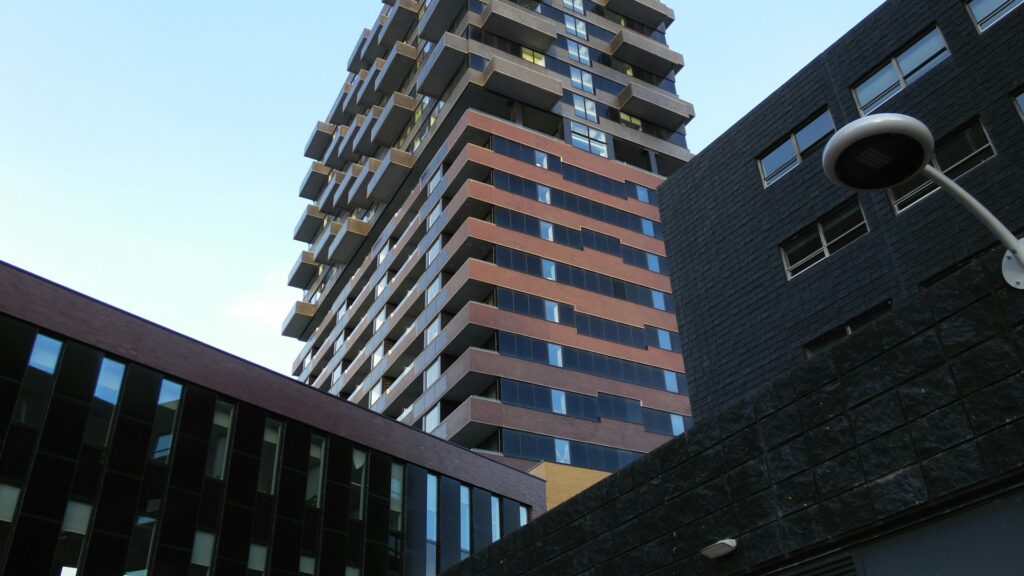What is Social Housing? Understanding the Basics and Its Importance
It refers to a part of social infrastructure that ensures living sustainability and the effective provision of living conditions for people in need because of their low income.
The discourse on the housing and affordability crisis in major cities would stand to benefit from improved appreciation for the key principles and importance of the entire concept of social housing for sustainable urbanism.
The blog covers basic concepts of social housing, what it is, the types, advantages and possible difficulties, and importance of social housing with reference to inclusive community development.
Defining Social Housing
Social housing means renting houses let by the government or other non-profit making bodies to people who cannot afford to live in houses that are charged at the market price.
It is expected to address social needs of vulnerable sectors such as low income earners, aged persons and the disabled.
The overall objective is basically to provide individuals and families with adequate shelter despite their state in life.
There is a number of social housing that can be distinguished: public housing, community housing, and subsidized one.
Each type may have different eligibility criteria and funding mechanisms, but they all share a common goal: to reduce housing vulnerability and improve the wellbeing of people residing in the dwellings.
The Importance of Social Housing
Housing is not just a roof over people’s heads and social or council housing is no exception to this.
Here are several key reasons why it is vital:
1. Affordability:
It meets the needs of growing cost of living for families with the limited incomes.
It assists to alleviate the cost impacts of rent on low income earners hence they can manage their limited resources in other aspects such as food, healthcare or education among others.
2. Stability and Security:
According to the given program cheap houses for families give them stability and security that can form a healthy society.
This means that when people have a stable home front they are more likely to do well in their personal as well as their working lives.
Achieving social housing provides a solution to the homeless and those struggling to find a house and this is because problems surface when one is housed insecurely.
3. Community Development:
It is thus imperative that the role, which social housing has in creating harmonious societies cannot be understated.
It enables social interaction and also prevents tackling of neighborhoods with people of a given type of housing.
Millennial is a community of integrated neighborhoods subsuming people from different background and income, so it encourages this social capital.
4. Health and Well-Being:
Environment significantly affects health standards of an individual or society in question.
It mostly focuses on safety, hygiene and space hence leading to better health physical and mental health among tenants.
Housing is an important determinant of life quality and stresses in absence of satisfactory housing a person can be in stress.

Challenges Facing Social Housing
Despite its importance, social housing faces several challenges that hinder its effectiveness and reach:
1. Funding Constraints:
Governments around the world face a number of challenges, which makes it hard for them to set aside enough cash for the projects.
State funding decreases during recessions, problems with deficit and subsidies may cause insufficient funding for the construction and maintenance, resulting in restricted number of units.
2. Stigma and Misconceptions:
The social housing is always associated with negative connotations, and a perception that such housing is meant for the ‘less fortunate’. S
uch a perception will definitely repel potential users and there will always be community which will resist construction of the units.
Rather, the public needs to be educated about the role of diversity in housing to find a way to accept such projects as meaningful for society.
3. Maintenance and Quality:
Regarding social housing; sometimes the units have a bad maintenance problem and no adequate facilities.
If the living properties are neglected they provide unfavorable environment to live in hence promoting cases of poverty and instability.
Continued financing of maintenance of social housing is equally important to maintain decent living standards.
4. Bureaucratic Hurdles:
Forces that affect this sector suggest that the journey toward getting affordable homes isn’t easy; it entails several hoops to jump through in a bid to secure social housing.
Long time waiting list and numerous application requirements can discourage people from applying for the support.
Efficient of these processes equally needs to be enhanced to help increase access to social housing.
The Future of Social Housing
As far as looking into the years to come, the social housing will evolve basing on creative ideas and joint action of the state, non-governmental organizations and the business sector.
Here are a few approaches which might contribute to future development;
1. Building Public-Private Partnerships:
Mechanisms which embody the interaction between public organizations and private construction firms make it possible to incorporate additional resources in the implementation of social housing projects.
This especially applies to financing and development duration.
2. Improving Inclusiveness:
Strategies for affordable housing must include social housing as primary focus instead of only market strategies from the onset of developments.
Laws that govern building practices may be modified to promote the available housing within the new structures ensuring people of different economic backgrounds live together.
3. Community Engagement:
Participation of the residents in the planning and decision processes of social housing projects may bring more practical and sustainable results.
The input of the community guarantees that construction of development addresses the most desirable features of the occupant populace.
4. Innovative Housing Models:
Self-organised housing format including cooperative housing and modular homes can be seen as an effective strategy and solutions to the housing deficit.
These models can need be adjusted for demographic and economic characteristics; they are viable in the long run.
Conclusion
An important component of the development of illustrated and socially oriented cities, social housing needs to be seen as a solution to important problems of affordability, stability, and population welfare. .
All the same, it holds the promise for certain monumental positive change in the given field.
Through funding of social housing and promotion of multi-sector partnerships, societies can make communities of chance for all people.
Ongoing changes in the structural character of the crisis will necessitate and demand sustained focus on promoting knowledge and dedicated investment to social housing.
Also read: Defining Affordable Housing and a Minimum Supply of Social Housing

